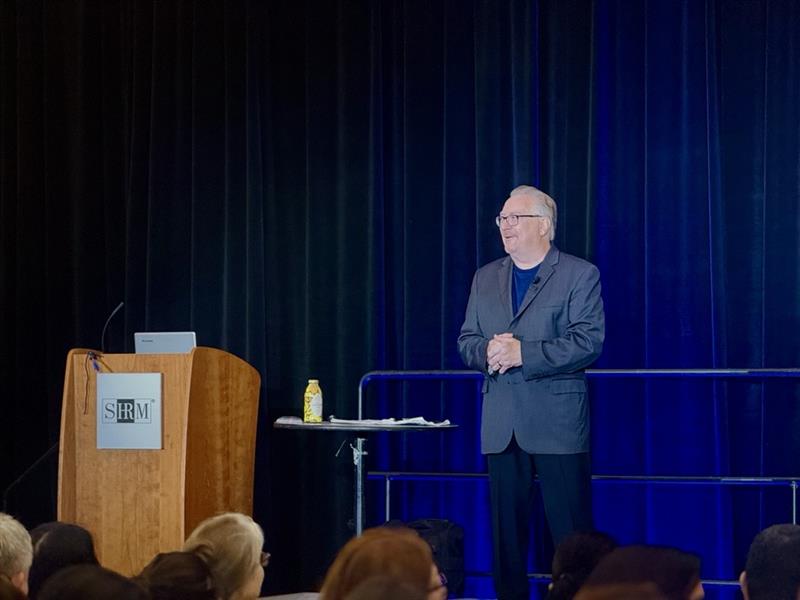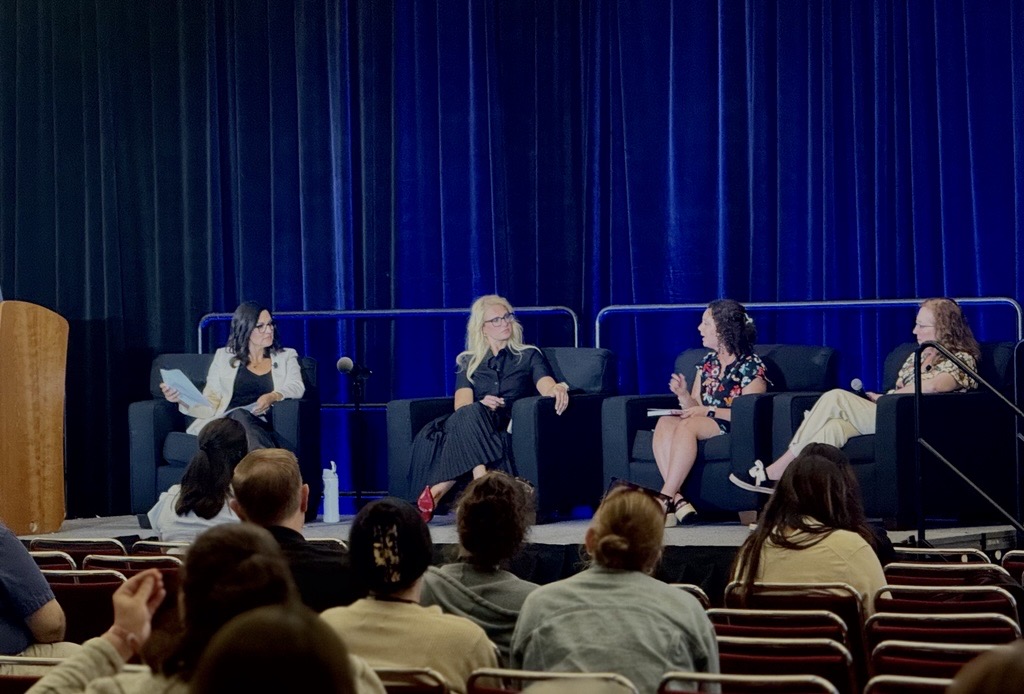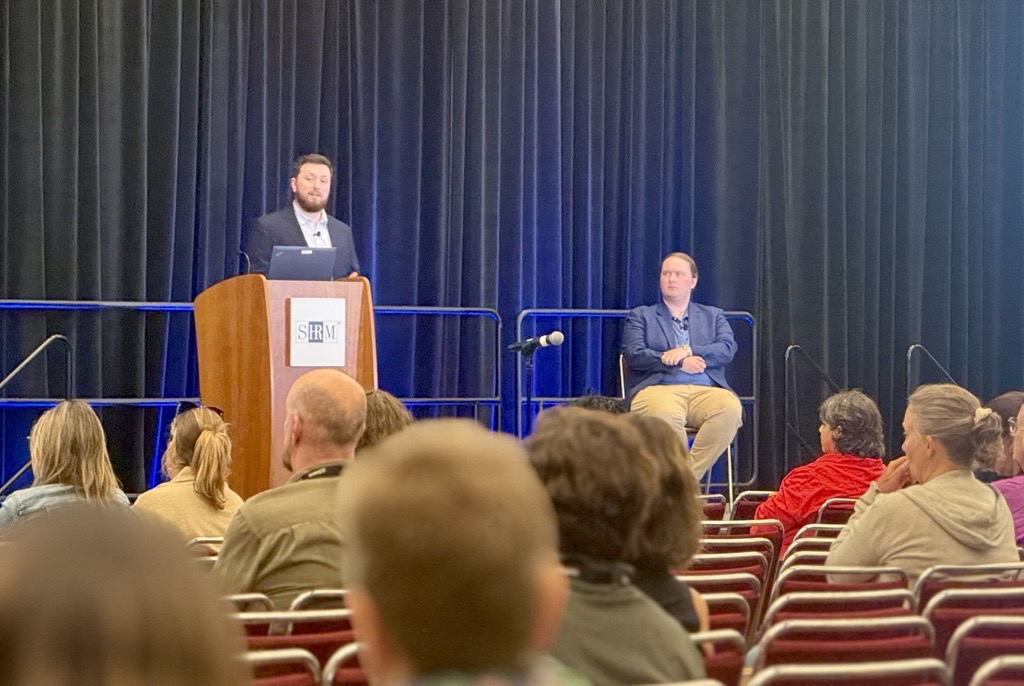As we close in on the end of SHRM 25, HR professionals are racing around the venue to make sure they’re getting the latest and greatest advice HR leaders are offering, and it’s clear some of the best has been saved for last.
Our biggest takeaways from today revolve around HR’s ability to support and guide employees. From setting dealing with difficult people, to assisting new parents, to the biggest news for benefits this year—Check out the most vital info you need to be an HR hero!
Difficult People And What To Do
One of the busiest sessions of the conference saw Psychologist Bruce Christopher take the stage and set the foundation for how everyone—not just HR professionals—can better deal with difficult people.
We’ve all had to deal with unsavory types: power-hungry bosses, know-it-alls, lazy coworkers. Difficult people are everywhere, but why? Why are difficult people difficult?
“Because it works,” Christopher says. When someone blows up over a small issue, there’s a good chance someone will try and resolve the issue so that they don’t have to deal with someone’s anger. These difficult people are behaviorally blind, unable to see their actions for what they are, and so they simply steamroll their surroundings.
So, what can you do about it, in the workplace, and in life?
Christopher outlines the “boundary box”, explaining that you can only control yourself. But within that box, you have steps you can take to utilize the surprise effect:
- Do the exact opposite of what is expected
- Take control of your own responses
- Be proactive instead of reactive
- Interrupt the pattern
These items allow you to be what Christopher calls a “moment molder”, so that when difficult people come your way, they’re difficulty isn’t what controls the situation, or you. The next time someone frustrates you for the sake of frustration, in the office or outside, remember what you can control, and mold the moment.
Care for The Caregivers
Nearly 73% of the entire workforce is a caregiver. In the words of Paula Faris, award-winning journalist and author who hosted a conversation on the topic, “Investing in caregivers is investing in the workforce.”
Faris was joined by Tina Beaty, Chief Branding & Marketing Officer for SHRM, Madeline Mitchell, USAToday reporter, and Phyllis Stewart Pires, Associate VP of Employee Support at Stanford. Together they tackled not only the major effect caregivers have in the workplace, but also strategies for how you can advocate for and support these pivotal individuals.
When caregivers aren’t supported, everyone loses. Lost wages rise, employee engagement and productivity plummet, attendance drops—a workforce that doesn’t support caregivers is one that fails.
So, what can HR Professionals do? Well, the solutions with the biggest impact our speakers found are:
- Providing a stipend for childcare
- Investing in on-site daycare
- If you aren’t in a position of power, start the conversation, and empower the voices of caregivers around you
The biggest key to success is ensuring that caregivers are at the decision-making table when the time comes. Their voice, their choices, are what matter.
The Results Are In: Benefits You Need
SHRM released its 2025 Employee Benefit Survey Results, detailing the critical trends we’re seeing inform today’s workforce. The study is nearly 30 years old, and covers both short and long-term trends, swayed by laws/economic policy and societal changes respectively.
From the employer’s perspective, the biggest takeaways from this year’s results were:
- Healthcare remains king: 88% of employers have it as their largest priority
- Retirement consciousness grows: More employers are offering more options, and more employees are taking advantage.
- Family care is threatened: The percentage of orgs offering things like elder care went unchanged, but the workforce itself is aging, which is causing some unease
- Wellness programs on the decline: Since 2021, wellness programs have declined by 14%
But what about the employees’ thoughts? Most ranked similarly to employers, ranking health-related, leave, and flexibility as most important, but discrepancies begin to show when looking at family and wellness benefits.
What should you do with this info? Awareness of these trends allow HR professionals to be proactive in what benefits they work to grow. There’s no “one-size-fits-all” benefit program. Be aware of your workforce, what they need and where they’re at, and build off that knowledge.






